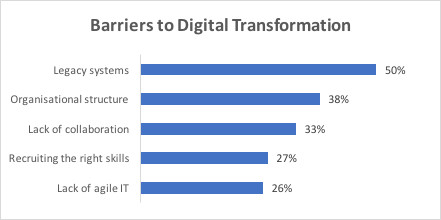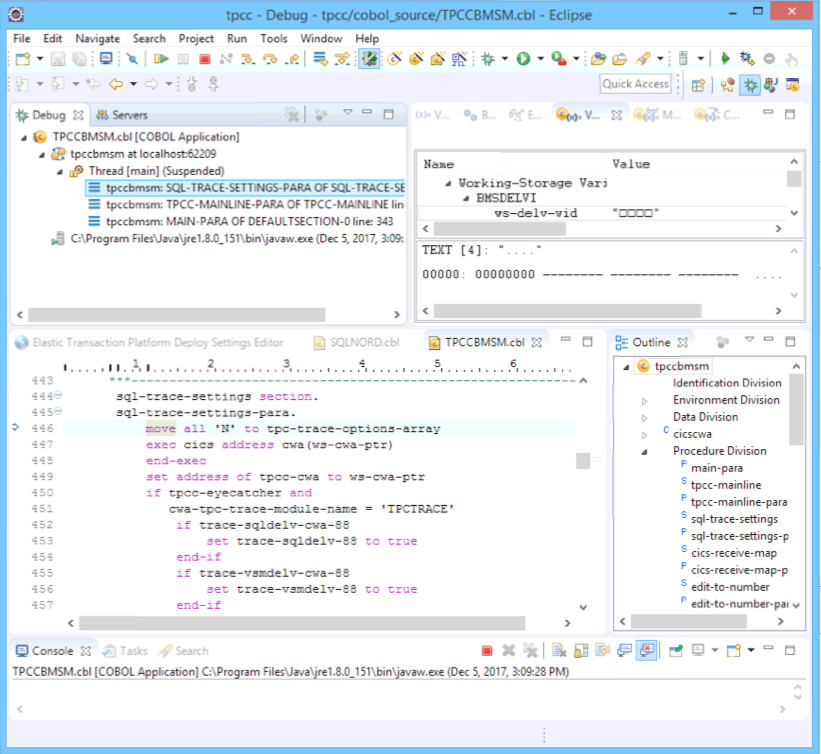
IBM Mainframe Security To LDAP (Done In 60 Seconds)

Author Archive
-
June 1st, 2018
IBM Mainframe Security To LDAP (Done In 60 Seconds)

TL;DR — watch this video to see how IBM workload transformation with Heirloom enables you to fully replicate your IBM Mainframe application security controls.
So far in our “Done In 60 Seconds” series, we have covered application migration (automatically transforming an unmodified Mainframe COBOL/CICS/VSAM application to a Java Application Server & Relational DB) and data migration (migrating a Mainframe VSAM file to a Relational DB without changing the application source).
In this article, we are putting the spotlight on application security. The IBM Mainframe has acquired the reputation of being a highly secure application platform, primarily because of its ability to manage & control access to application-specific resources. These “rules” and “policies” have a considerable impact on prescribed operational processes related to the application workload, and so it is vital that they can be easily replicated on the target platform. In 60 seconds, here’s how it’s done with Heirloom:
With integrated support for user-authentication and resource-authorization in Heirloom, existing rules are extracted from the host system (e.g. RACF) and precisely replicated in any industry-standard LDAP server (including open-source implementations such as Apache DS), without requiring any changes to the application code.

Application security should not (as it often is) be relegated to a sideline consideration during (or even, post) a transformation project. Doing so injects a lot of unnecessary risks, and yet many modernization vendors fail to fully address this critical piece of the puzzle.
Mainframe applications (batch and online) often rely on fine-grained resource-authorization (not just user-authentication), and the transformed application should provide the same controls, without requiring any code changes, to guarantee enforcement of existing security policies via integration with industry-standard directory services.
Finally, because applications transformed with Heirloom are 100% Java, transport-security (secure communications) and platform-security (safe deployment of application resources) is easily achieved via seamless integration with Java Application Servers.
-
March 1st, 2018
Mainframe VSAM to Relational DB (Done In 60 Seconds)

In my previous article, we showed you how Heirloom can automatically transform a complex mainframe warehousing application and deploy it to a Java Application Server in 60 seconds with 100% accuracy, guaranteed.
Since we’ve already showcased what we can do with application code & logic, we’re now going to take a look at what Heirloom does for data transformation. Again, it will only take 60 seconds so keep that in mind when you’ve watched the video and taken a breath to consider the benefits of transforming proprietary mainframe data stores into accessible relational databases.
So, what happened? We took a VSAM KSDS file encoded as EBCDIC from the mainframe, analyzed the record structure, and used that XML representation to extract, transform and load the data into a PostgreSQL database table encoded in ASCII. The application was then executed without any changes to the source code (so yes, we were using the applications existing COBOL I/O statements to seamlessly access the relational data).

The application knows nothing of this wonderous outcome and “believes” it is still grinding through a VSAM file that is still blessed with packed decimals & redefined record structures. Heaven. Shhh, we won’t tell if you don’t.
Further, because the data is now in a relational store, we can easily establish views to make the data visible to other applications that need to interrogate the data via SQL.
When migrating mainframe workloads, data is often overlooked along with other areas such as batch processing, security, deployment, cloud, DevOps, UI modernization, and application refactoring. Heirloom is the only platform in the market that fully addresses each of these critical components. Something that we will continue to make clear over the coming weeks. And don’t forget, with Heirloom, migrated workloads are 100% Java deployed to any industry-standard Java Application Server (e.g. Apache Tomcat).
-
January 1st, 2018
Application Transformation (Done In 60 Seconds)

Mainframe COBOL/CICS/VSAM to Java Application Server & Relational DB
TL;DR — Watch the video below to see how Heirloom automatically takes a complex mainframe warehousing application to Java in 60 seconds with 100% accuracy, guaranteed.
Migrating mainframe workloads to anywhere is hard, right?

You may have seen vendor presentations that promise an assured migration process, led by analysis tools that paint interrelationships between application artifacts that bedazzle (mislead) you into believing that the complexity is well understood.
It’s also blatant vendor misdirection. The hard part is in the migration, not the analysis.
What you are seeing is superficial at best. A “shiny object” that distracts you from the complexity ahead, and one that steers you towards an expensive multi-year services-led engagement that is aligned with the vendor’s business model, not yours.
Just ask the vendor, “where does the application get deployed?”. If the answer is not “any Java Application Server“, you are being quietly led into a dependency on a labyrinthic proprietary black-box that underpins an enforced application software architecture (e.g. MVC). Any assertions that you are now on an agile, open, scalable, performant platform, die right there.
I’m not going to get into an extensive takedown (in this article) of why migration transformation toolsets that are borne of application analyzers are a hugely expensive strategic misstep because I’d like you to spend the next 60 seconds watching how astoundingly fast Heirloom is at transforming mainframe applications to Java.
Need a recap? What you saw was a mainframe COBOL/CICS implementation of the TPC-C benchmark (an application with over 50,000 LOC and 7 BMS screens) being compiled by Heirloom (without any code changes) and deployed to a Java Application Server for immediate execution via a browser. All the data for this application was previously migrated from VSAM (EBCDIC encoded) to an RDBMS (ASCII encoded). In later articles, we’ll demonstrate how Heirloom migrates mainframe batch, data, and security profiles just as quickly.
Although the resulting application is 100% Java (and deployable on-premise or to any cloud), Heirloom provides full support (via Eclipse plug-ins) for on-going development of the application in the host language (COBOL in this example, but PL/I also) or in the target language (i.e. Java), or both. This was done because any transformation is not just about the application artifacts. People are obviously a big part of the IP equation, and securing the engagement of IT staff is essential to ensure a successful transformation. Not just on day 1, but for many years post-deployment.
-
August 16th, 2017
COBOL/CICS Hooks Up With Pivotal Cloud Foundry

Would you be skeptical of a claim from a vendor that stated you can take existing mainframe workloads (online and batch), and automatically transform them (with 100% accuracy) into instantly agile Java applications that can immediately be deployed to the cloud? You wouldn’t be alone. For many of our initial client meetings, there’s a palpable sense of disbelief (or healthy skepticism, if you prefer).
So, here’s another 3-minute video from Ian White, Heirloom Computing’s VP of Engineering, that demonstrates that claim, using Pivotal Cloud Foundry (PCF).
TL;DW? These are the (simplified) steps:

What happened? We took an online mainframe application and deployed it to PCF in 3 minutes. No misdirection, real code, real results, and a re-platforming project lifecycle that puts you in control (so you can avoid black-box solutions).
For us at Heirloom Computing, Cloud Foundry is a great example of how Heirloom maximizes the power of open-source stacks to provide clients with a way to include high-value mainframe workloads in strategic initiatives (e.g., cloud, digital transformation, etc.). One that protects existing functionality, but also one that is seamlessly integrated with an agile ecosystem.
-
August 9th, 2017
Amazon Alexa Hooks Up With COBOL/CICS (On The Cloud)
Gary Crook, President & CEO

There’s a lot of chatter about how to make mainframe workloads agile. I have contributed to that chatter myself. The discourse is essential. Boiled down, my assertion is that the mainframe ecosystem is foundationally not agile (and never will be). No amount of DevOps tooling or vendor misdirection is going to change that.
In my last article, I made the following statement:
Mainframe workloads are an essential part of any digital transformation strategy, but those workloads will persist in a different form. One that protects existing function, but also one that is seamlessly integrated with an agile ecosystem.
Below is a (3-minute) video that implements the above statement. It was put together inside 2 hours by Heirloom Computing’s VP of Engineering, Ian White.
This was a mainframe application that was compiled (unchanged) to Java and executed on the cloud using Heirloom, which automatically makes the workload instantly agile (all transactions are immediately accessible as a service). Agile enough for Ian to very quickly hook it up to Alexa.
-
June 28th, 2017
COBOL & The Definitive State of the World’s Greatest Legacy Ecosystem

TL;DR — see picture left, or… a career COBOL’er makes a compelling argument that legacy application systems (COBOL et al) on the IBM Mainframe are killing IT digital transformation initiatives.
So, a heads-up… this article is going to be self-serving (at least to start with, perhaps longer), as I’ve come to the conclusion that it is necessary for me to “introduce” myself in an attempt to establish a greater level of credibility than I might otherwise be able to muster!
I’ve been working for over 30 years. My entire career has been in the “COBOL space”, the vast majority of it working with Global 2000 companies to deliver COBOL application development & deployment platforms that were primarily focused on adding value to the IBM Mainframe (“The World’s Greatest Legacy Ecosystem”).
I have worked at the “coal face” developing bespoke commercial COBOL applications. I have worked developing COBOL compilers and runtimes. I have led global teams of astoundingly brilliant people that have built COBOL ecosystems from scratch. Back in 2010, myself and a group of others with similar career profiles, and significantly greater areas of expertise, founded Heirloom Computing to bring a new COBOL ecosystem to market.
Heirloom leverages open-source software stacks (primarily Java); one that immediately exposes existing business rules from mainframe workloads as a collection of Java interfaces and RESTful services so they are immediately available to other applications; one that from day 1 is absolutely guaranteed to accurately retain existing business logic, data integrity, and security profiles; one that allows application developers (using Eclipse) to continue in COBOL, or Java, or both, so IT can “iterate away” from a constrained model to an agile one, at a pace that is determined by their own unique business drivers. This approach removes the “re-platforming” risk and makes the workload instantly agile.
We did this because we believe (and our investors and customers have validated) that IT needs to get beyond decades-old legacy systems if they are going to compete in a digital world.
Credibility enhanced? Either way, on we go…
The IBM Mainframe is without a doubt (and by far) “The World’s Greatest Legacy Ecosystem”. Its reliability, pervasiveness, and keeper of systems of record are unmatched. Today, however, that proud legacy is increasingly burdensome. These (crucial) systems: are severely & systemically constrained (and today, agility really matters); have paralyzed IT with a (fearful non-viable) “do nothing” strategy which consequently inhibits execution of strategic initiatives (like digital transformation) that are needed to compete. And up to this point, we’ve not even mentioned the operational expense nor the risks of an ever-aging/depleting skills pool.
Some of these systems, especially in government, have eroded/warped to the point that paper processes have been introduced to integrate legacy workloads with new services! This is NOT a failure of DevOps, nor tooling, but a failure of leadership and the brutal reality that mainframe systems of record are inherently NOT agile because a) they were never designed that way, and b) the COBOL ecosystem itself (an archaic compute-model, a procedural language, a failure to embrace open source, a lack of application frameworks, an entrenched culture, …) is NOT agile.

In article, after article, after article, IT leaders and analysts have clearly identified the challenge. Progressive enterprises like GE and Capital One are already working on solutions. Mainframe workloads are an essential part of any digital transformation strategy, but those workloads will persist in a different form. One that protects existing function, but also one that is seamlessly integrated with an agile ecosystem.
-
June 28th, 2017
LJM Global Cyborg Specialist Forges Alliance with Heirloom Computing to Deliver on Mainframe Transformation Demand in Australasia
SAN FRANCISCO & SYDNEY–(BUSINESS WIRE)–LJM Global Cyborg Specialist (LJM) is partnering with Silicon Valley software firm Heirloom Computing to meet demand from the Australasia market for automated mainframe workload transformations to Java and the cloud.
LJM will leverage their quickly expanding footprint in Australasia as the exclusive systems integrator for Heirloom’s ground-breaking Heirloom platform.
“There’s real leadership from enterprise CIO’s in Australasia who understand that standing-still with legacy systems is not an option when executing digital transformation strategies,” said Larry McGean, LJM’s CEO. “LJM shares this outlook and is now uniquely positioned to help CIO’s deliver lT for legacy workloads which are aging fast, and approaching a tipping point. Critically, they are already inhibitors to the execution of an increasing number of strategic initiatives.”
Kevin Moultrup, Heirloom’s COO, added, “Our team has been working with LJM for several years now, and we are excited to formalize our partnership with LJM to deliver high-quality proven software solutions to Australasia’s most recognized companies.”
About Heirloom Computing
Heirloom Computing is a global enterprise software company that partners with Systems Integrators to implement initiatives that enable the Global 2000 to automatically modernize legacy application systems to Java and the cloud where they can be aligned with broader strategic initiatives such as digital transformation — whilst guaranteeing to retain existing business logic and data integrity. For more information about how Heirloom can increase agility, and save IT departments time & money, please visit http://52.23.23.73.
About LJM Global Cyborg Specialist
In coordination with its field offices in Sydney and Melbourne, LJM purses software solution opportunities around the globe. Specializing in company-wide implementations of packaged systems such as SumTotal Payroll, Workday HR Integrations, Blue Prism IPA, QlikView/Sense, and now automated mainframe workload transformations with Heirloom. For more information, please visit http://ljmcyborg.com.
-
April 20th, 2017
Moving Beyond COBOL
Gary Crook, President & CEO
I’ve been involved with COBOL for most of my professional career. It is a language that has many unique characteristics, not all positive. Loved by few and (unfairly) vilified by many, it has persisted because it is extremely good at what it was built for — encapsulating business rules.
Many of you who have experience with the COBOL eco-system will appreciate the quiet reality of the absolute dependence that we all have on it as we proceed through our working day. The rest of you will likely be somewhat perplexed that anyone even uses COBOL today, and no doubt bemused by the bold assertion that your daily life without COBOL would result in unadulterated chaos. Well, despite the many predictions over recent decades of COBOL’s demise, this reality is not going to change anytime soon. That said, it would be remiss of us to not acknowledge the strategic intent of enterprise IT to convert COBOL to Java.
For typically risk-averse enterprise IT organizations, moving beyond COBOL is a tricky proposition. These applications represent the competitive differentiation of the business. They are the operational and transactional backbones of the business. They are the definitive manifestation of “mission-critical”. The thought of rewriting or replacing the high-value trusted business processes embedded in these systems can induce violent shudders of apprehension.
For server-side transaction processing, Java is often (if not already) the strategic platform of choice of enterprise IT – and even in the cloud, many PaaS providers have adopted Java as a supported engine (e.g. Amazon’s Elastic Beanstalk, Oracle Cloud, Google App Engine, and yes, even Microsoft’s Azure). Our take on why targeting the Java platform makes so much sense for enterprise IT, comes down to 4 key benefits:
1. The ability to deploy and extend applications on an open/strategic platform that is proven and trusted for high-transaction workloads that demand performance, scalability, reliability, security, and manageability.
2. Consolidation of application infrastructure to a single platform. No need to deal with multiple platforms on multiple operating systems.
3. Strategically positions applications for the cloud. Many enterprises have already made a strategic commitment to the Java platform. It’s a smart move — Java has already established itself as the de facto execution engine for the cloud.
4. Improves the productivity and agility of the development organization by modernizing skills, methodology, and process.
-
March 29th, 2017
Trump, Kushner, COBOL
Gary Crook, President & CEO
Not 3 words you’d immediately assemble together, but that’s exactly what Senior ComputerWorld Editor, Patrick Thibodeau, did yesterday.
His article was prompted by a White House announcement of an “Office of American Innovation” to oversee the modernization of federal IT.
The article then goes on to give Compuware a platform to launch a somewhat bizarre defense of COBOL, as if somehow, wrapping COBOL applications up in DevOps methodologies makes them agile, and consequently, the mainframe can be seen as (according to Chris O’Malley, Compuware’s President/CEO) “… a working environment that looks exactly like Amazon (Web Services)”.
No. It’s not. There’s no amount of makeup that you can apply to my face to make me look like Brad Pitt. Fundamentally, all the required structures for that transformation just do not exist.
There’s much to applaud with Compuware’s mission to modernize and retool the application development lifecycle on the mainframe and impart valuable new skill sets to a workforce that has been largely isolated from considering different approaches to the art of application development. However, beyond that DevOps veneer, you are still working with a language ecosystem on the mainframe. If that’s where you want to be, go for it.
As Shawn McCarthy, an analyst at IDC said later in the article: “… the challenge with older COBOL systems is that many were not designed to be extensible and everything that needs to be done has to rely on custom code”.
And that’s essentially why no matter how much makeup you apply, COBOL systems on the mainframe will never be truly agile. Instead, for as long as they persist, they will continue to be an increasingly burdensome anchor that will slowly but surely impinge on an enterprise’s ability to compete.
-
November 24th, 2015
Heirloom Immediately Available on the CenturyLink Cloud
Heirloom Computing, Inc. today announced the certification of Heirloom (Platform-as-a-Service) under the CenturyLink Cloud Marketplace Provider Program. Heirloom is a patented software platform that automates the transformation of mission-critical enterprise COBOL/CICS applications to 100 percent Java source and the cloud.
By simply getting started with the CenturyLink Cloud Blueprint, prospective users can easily leverage the value of Heirloom and its rich development toolset called Elastic COBOL (EC) Developer. Within minutes, a Windows-based instance of EC is automatically provisioned and ready for use.
Enterprise CIOs are being challenged to increase business agility, align and consolidate infrastructure to strategic platforms such as Java and the cloud, and significantly reduce the cost of maintaining an inflexible mainframe footprint that costs the industry $70 billion annually.
Today’s Heirloom announcement provides CIOs with a low-cost, low-risk, pay-as-you-use, COBOL-to-Java solution that is readily available on the CenturyLink Cloud platform.
“The ROI of using Heirloom is as immediate as it is profound – Java apps that can run on any Java virtual machine means increased agility combined with significantly lower execution, maintenance and support expenses,” said Gary Crook, CEO, Heirloom. “We’re excited to be working with CenturyLink to meet the needs of enterprises that understand how the cloud can be used to transform legacy IT infrastructure to make their organizations instantly agile and super-competitive.”
“Heirloom is a great example of the workload breadth we’re seeing enterprises considering for migration to cloud,” said David Shacochis, vice president of platform enablement at CenturyLink. “Elastic infrastructure is transformative when applied to mainframe applications – technology like Heirloom EC makes that possible for our customers.”
About Heirloom Computing, Inc.
Heirloom Computing is on a mission to modernize the world’s business-critical enterprise software applications. Heirloom’s best-in-class tools seamlessly migrate legacy systems to private and public cloud computing infrastructures, so IT departments can reap the cost benefits of cloud computing and satisfy user demands for applications accessible via web browsers and mobile devices.
For more information about how Heirloom Computing’s legacy modernization tools can save IT departments time and money, please visit www.heirloomcomputing.com.
Privacy Overview
| Cookie | Duration | Description |
|---|---|---|
| cookielawinfo-checkbox-analytics | 11 months | This cookie is set by GDPR Cookie Consent plugin. The cookie is used to store the user consent for the cookies in the category "Analytics". |
| cookielawinfo-checkbox-functional | 11 months | The cookie is set by GDPR cookie consent to record the user consent for the cookies in the category "Functional". |
| cookielawinfo-checkbox-necessary | 11 months | This cookie is set by GDPR Cookie Consent plugin. The cookies is used to store the user consent for the cookies in the category "Necessary". |
| cookielawinfo-checkbox-others | 11 months | This cookie is set by GDPR Cookie Consent plugin. The cookie is used to store the user consent for the cookies in the category "Other. |
| cookielawinfo-checkbox-performance | 11 months | This cookie is set by GDPR Cookie Consent plugin. The cookie is used to store the user consent for the cookies in the category "Performance". |
| viewed_cookie_policy | 11 months | The cookie is set by the GDPR Cookie Consent plugin and is used to store whether or not user has consented to the use of cookies. It does not store any personal data. |
